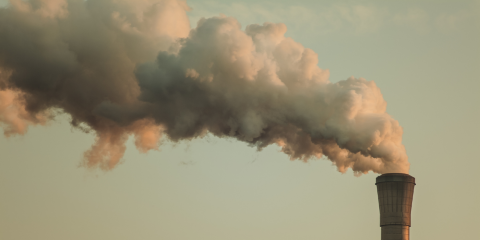Solutions to energy security issues lie much closer to home than costly gas imports

Key Takeaways:
AEMO forecasts that Victoria may see excess gas demand events due to peak demand not decreasing as quickly as peak supply.
Cost-effective and targeted interventions could lower peak day gas demand and eliminate the risk of outages in Victoria, while lowering household energy bills.
Ending the sale of gas appliances, particularly space heaters, would deliver the largest reductions in gas demand given Victoria’s high demand for winter heating.
This analysis is for information and educational purposes only and is not intended to be read as investment advice. Please click here to read our full disclaimer.
19 April 2024 - (IEEFA Australia): Cost-effective interventions can avert gas demand outstripping supply on peak days in southern Australia if taken soon, according to a new report released today.
The Australian Energy Market Operator (AEMO) forecasts that Victoria faces the risk of excess gas demand on peak days as early as next year, increasing in frequency each year.
Rather than spend billions on infrastructure to pipe or ship gas vast distances to plug this looming supply gap, reducing demand in the first place would save consumers from higher energy bills and exposure to volatile gas prices, according to the report No shortage of solutions to gas supply gap.
The solutions lie much closer to home, through a series of cost-effective measures to improve the energy efficiency of new and existing houses and buildings, says Joshua Runciman, IEEFA’s lead analyst Australian gas and the report’s author. These include:
- Replacing inefficient domestic gas appliances with electric ones at their end of life
- Offering incentives to insulate and draught-proof existing homes
- Replacing industrial gas boilers with heat pumps where feasible
Together, these measures could eradicate the risk of excess gas demand events in 1-in-2 year and 1-in-20 year peak day demand scenarios by 2028, the first year where AEMO expects peak day supply gaps even under a 1-in-2 year peak day. (The 1-in-2 scenario is a peak winter demand day experienced once every two years; 1-in-20 is once in 20 years.)

“Improving gas efficiency and increasing the use of highly efficient electric appliances would have the double benefit of reducing market tightness, particularly on peak demand days, and increasing the predictability of energy bills,” Mr Runciman says.
“We calculated that a household’s winter energy costs would be only 90% higher in winter compared with summer by using heat-pump based appliances compared with 167% higher for gas-based equipment.”
Industrial gas users are much more sensitive to price hikes than domestic users. Reducing gas demand across the board could save many companies from enforced closure due to spiralling costs from “unsustainable” gas prices and productivity losses from peak outages.
“The industrial sector also presents opportunities to lower energy consumption through improved energy efficiency and greater adoption, where feasible, of more efficient heat pumps rather than gas boilers,” Mr Runciman says.
Australian homes have very poor thermal efficiency. Some Victorian households use up to three times more gas than average, leading to significantly higher energy bills for these households.
“The amount of energy used by Australian households for cooking, hot water heating and space heating could be significantly lower if gas appliances were replaced with more efficient electrical appliances,” Mr Runciman says.
Victorian households could save up to $1,200 a year by switching to efficient electric appliances and additional locked-in lifetime costs of almost $900 million from inefficient gas appliances.
Residential electrification and energy efficiency upgrades can also deliver improved health outcomes, due to improved thermal comfort and lower rates of asthma, and create jobs.
The alternative is to develop new local sources of gas supply or build pipelines or LNG import terminals to fill the supply gap. The massive capital outlay required is likely to be passed onto consumers through higher energy bills, and these projects are unlikely to see any return on investment.
“These interventions will also help to ensure gas remains available for commercial and industrial users which are not yet able to switch away from gas, thereby helping to ensure Australia maintains gas-intensive manufacturing during the transition to low emission alternatives, such as hydrogen,” Mr Runciman says.
“However, urgent action is needed. Without it, Victoria, along with the other southern states, is likely to face higher gas prices and energy insecurity.”
Read the report: No shortage of solutions to gas supply gap
Media contact: Amy Leiper, ph 0414 643 446, [email protected]
Author contact: Joshua Runciman, [email protected]
About IEEFA: The Institute for Energy Economics and Financial Analysis (IEEFA) examines issues related to energy markets, trends, and policies. The Institute’s mission is to accelerate the transition to a diverse, sustainable and profitable energy economy. (ieefa.org)











